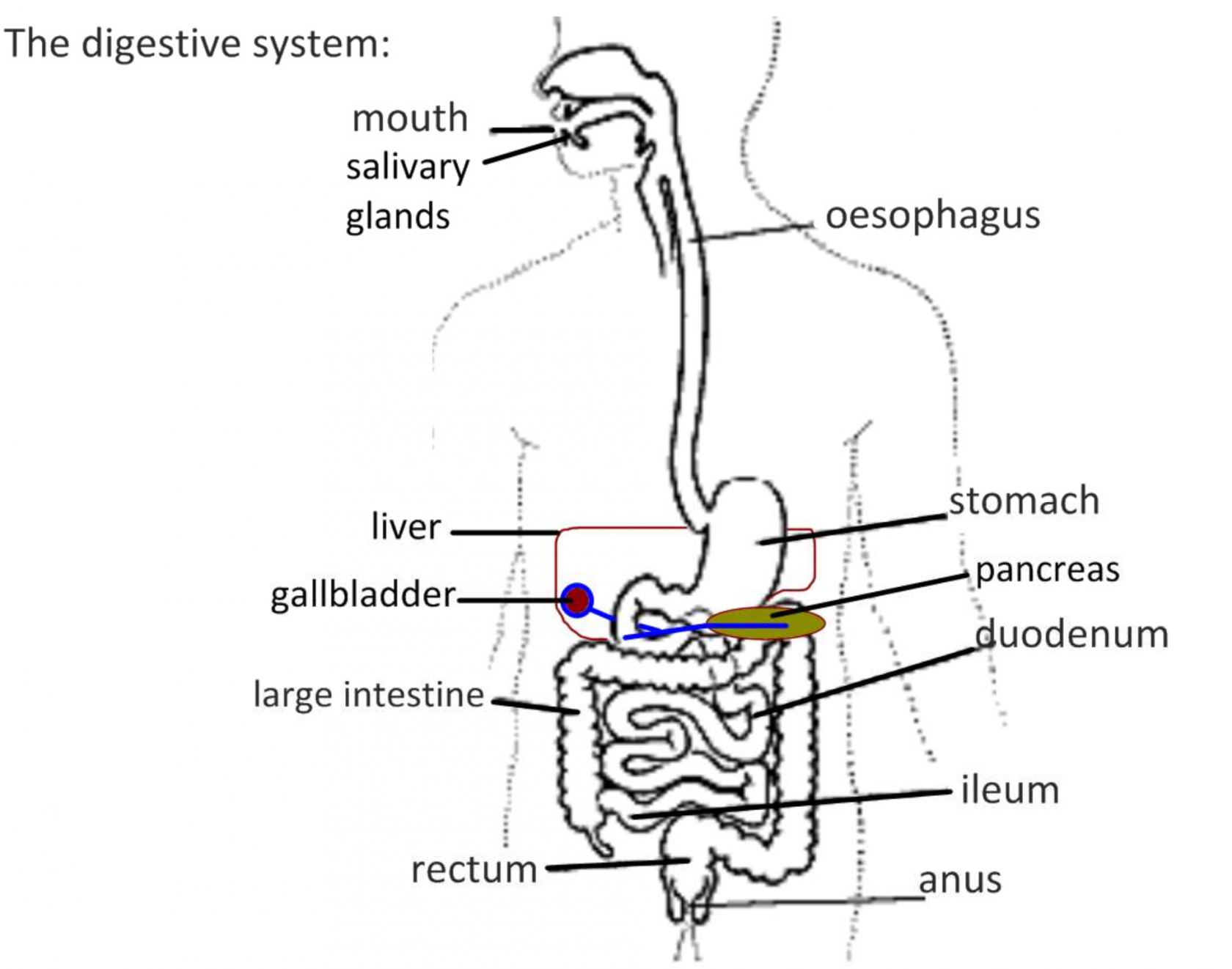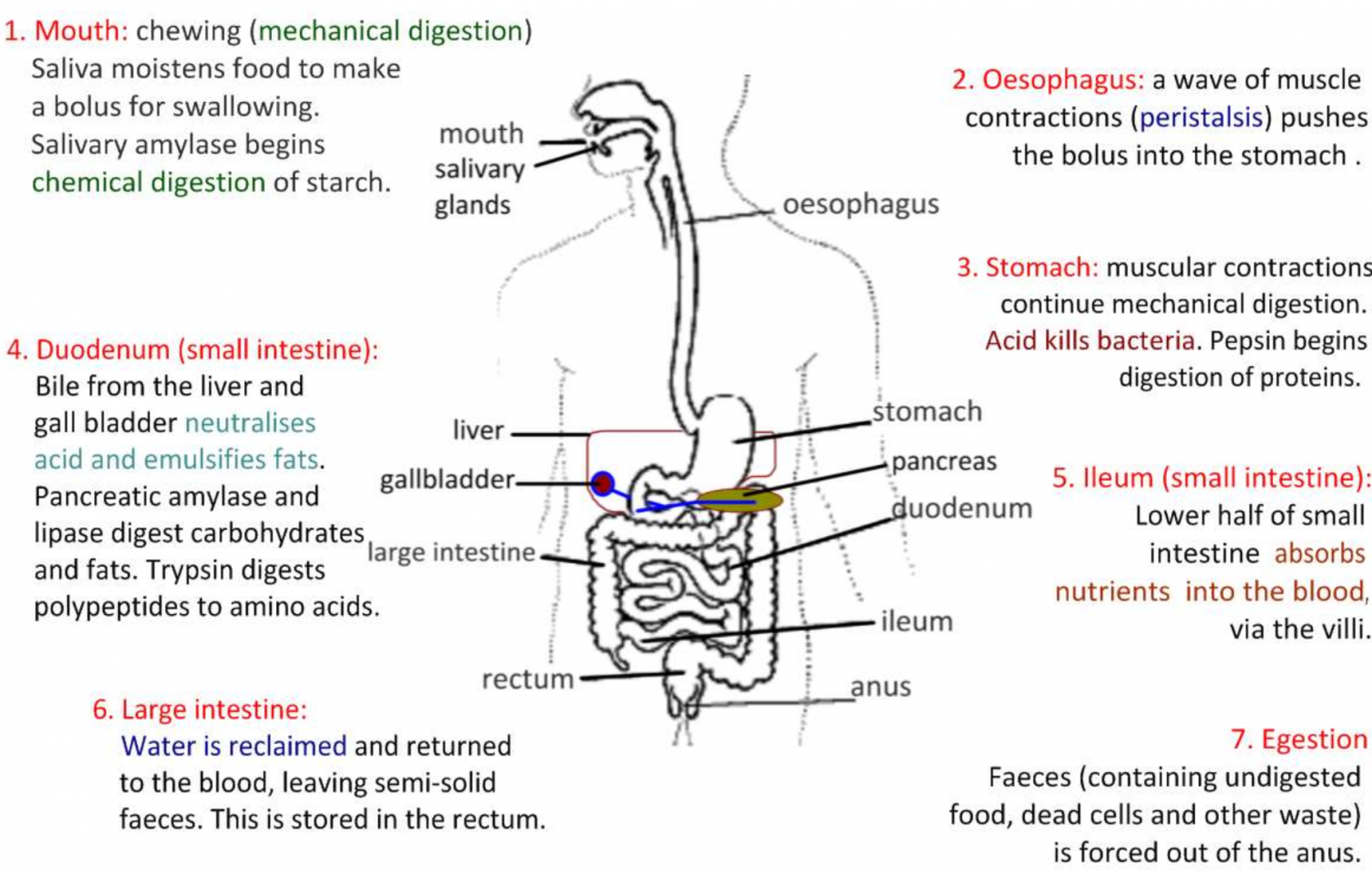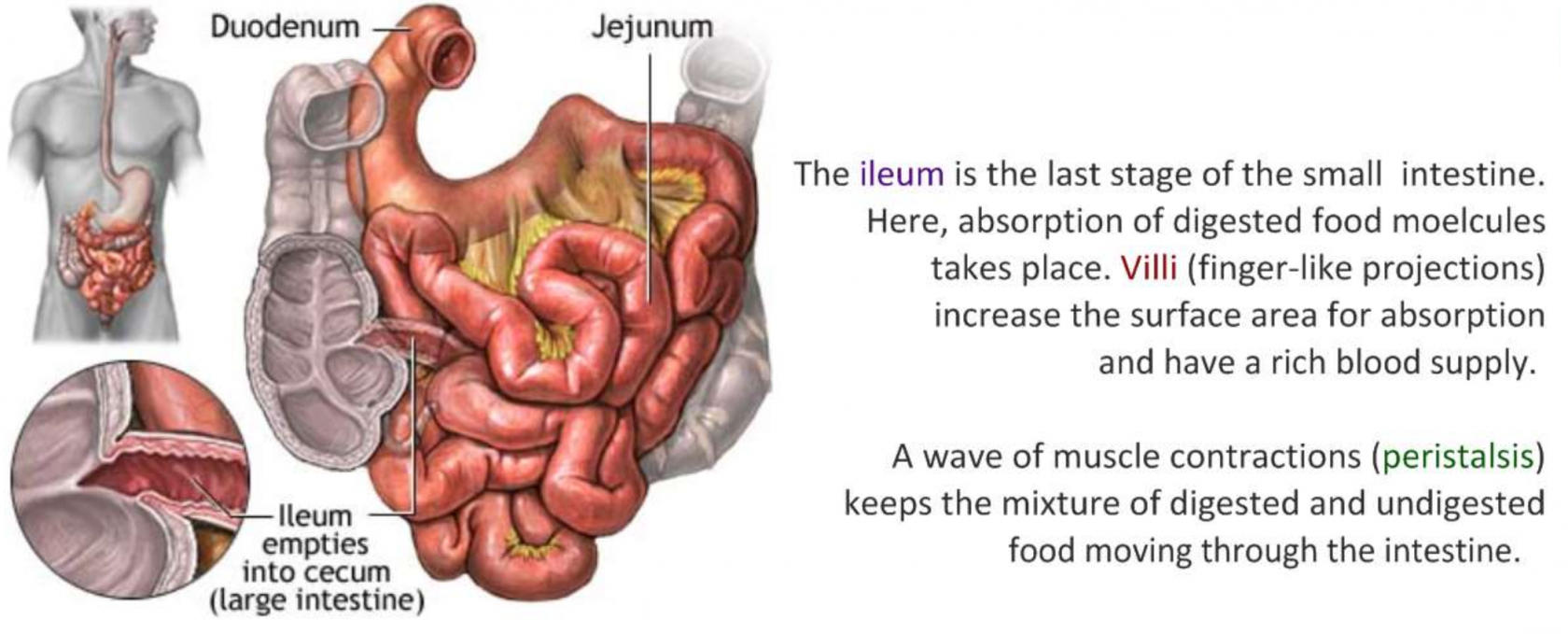Digestion system
Digestion is the process of converting large and complex molecules into simpler forms, which are small molecules that are easier to digest by the human body.
The purpose of the digestive system: is to bring essential nutrients into the internal environment so that they are available to each cell of the body
Mechanisms of Digestion:
Ingestion—food is taken in
Digestion—breakdown of complex nutrients into simple nutrients
Motility -of gastrointestinal (GI) wall—physically breaks down large chunks of food material and moves food along the tract
Secretion -of digestive enzymes allows chemical digestion
Absorption—the movement of nutrients through the GI mucosa into the internal environment
Elimination—excretion of material that is not absorbed
Regulation—coordination of the various functions of the digestive system
Many people confuse the terms: digestion, absorption, and assimilation
• Digestion – the process of breaking down large molecules into
smaller ones
• Absorption – when the small molecules are taken up from the digestive system into the bloodstream
• Assimilation – when these molecules are incorporated into tissues of the body
Two Types of Digestion
• The alimentary canal is a long muscular tube running from the mouth to the anus.
• Digestion starts in the mouth.
• The two types of digestion occurring in the mammalian digestive system are:
– PhysicalDigestion(MechanicalDigestion)
• the action of teeth chewing food, physically breaking the food into smaller
pieces
– chemical digestion
• Involves chemical reactions (Hydrolysis) and the help of catalysts to break food into smaller pieces
Structure of the digestive system
Stomach
The stomach contains hydrochloric acid with a pH level of around 2, allowing the stomach to kill bacteria and denature the protein. The stomach also contains pepsin enzymes that start digestion. Stretch receptors in the muscular wall signal the release of enzymes.
Small intestine
the small intestine consists of the duodenum, jejunum, and ileum. It functions as the part to further digest food molecules and absorb nutrition.
Large intestine
The function of large intestine is to absorb water into the blood.
Enzyme
Enzymes cause changes in the chemical composition of food as it travels through the digestive tract; these changes are the result of hydrolysis
Principles of enzyme action:
Specific in their action
Function optimally at a specific pH
Most enzymes catalyze a chemical reaction in both directions
Enzymes are continually being destroyed or eliminated from the body and must continually be synthesized
Most digestive enzymes are synthesized as inactive proenzymes






No Comments